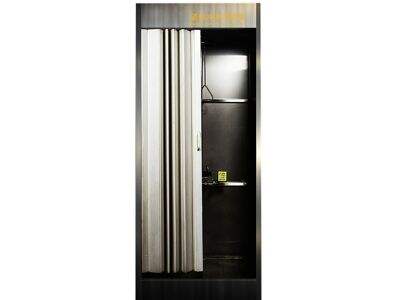Eye wash stations are important in a workplace's safety and protection from severe eye injuries. Their regular inspection is crucial as it will ensure their good performance. Jiahe emergency eye wash station inspection entails numerous checks of its several key components and adherence to specific guidelines in line with safety regulations. This essay provides an overview of safety tips, procedures, and guidelines related to eye wash station inspection.
What to do When doing an Eyewash Inspection?
When it comes to actually conducting an inspection of an eye wash station, it is essential to make sure to check all the critical components associated with its functioning. First and foremost, it is necessary to check the water flow of the eye wash to ensure that it is consistent and strong enough to rinse off the eyes efficiently in case of exposure to a chemical or dirt. A common approach is to activate the eye wash station and see if the water is flowing out of it without any disruptions or blockages. Otherwise, it is better to identify the root cause and eliminate it to ensure the eye wash’s optimal performance. It is also necessary to ensure that there is not too hot or too cold water coming from the eye wash as it may further harm the rinsed eye.
Check If the Nozzle is in Good Condition
Another important aspect to remember is to check the condition of the eye wash nozzles, as they should be clean to provide a free flow of water. Minerals or dirt may collect in the eye wash nozzles over time and prevent the water from thoroughly rinsing the eyes. To avoid the problem, it is necessary to clean the eye wash nozzles from time to time to ensure optimal performance. Lastly, an important feature that needs to be inspected is the eye wash station activation mechanism; it needs to be easily pressable so that the eyes can be rinsed within seconds. If the activation mechanism appears to be rusty or hardly pressable, it is best to replace it altogether.
Step-By-Step Eyewash Inspection
Apart from individual inspections of the eye wash stations, universal inspections of all eye wash stations in a facility are necessary for complete safety. Create a checklist that outlines all the components that need to be inspected such as water flow, temperature, nozzles, and activation mechanisms so that the checklist can be used in all the eye wash stations. Assign trained personnel to perform routine inspections of all eye wash stations in the premise based on the established guidelines and checklist. The inspections should be done at intervals to ensure that the Jiahe emergency eyewash and shower remain functional and the facility remains compliant to all safety practices. Keep records of all the inspections conducted, complete with the problems identified and how they were resolved, to monitor the maintenance history of each eye wash station. Consult the safety officers and health professionals in identifying the best way to implement the guidelines or which components to start with.
Carefully Check For Any Problem That Would Occur
To ensure the eye wash stations in an environment are in best working conditions, you need to inspect for common issues. One of the common problems include the temperature of the water being too hot or too cold. The water should be at the tepid level, which implies that it should never be too warm or too hot. This is because either way it would cause more harm to the eyes when one is exposed to substances. The other common issue should be the pressure if the water is too weak can be ineffective.
By following such regulations, the employer can prepare for an eye exposure emergency, thereby protecting the safety and well-being of employees. In conclusion, inspection plays an essential role in ensuring the safety of a work place. Through understanding the common issues, the key factors to consider, and the necessary regulations, employers can protect their employee’s vision and prevent eye injuries. Jiahe emphasizes this point by encouraging the periodic inspection of the eyewashing station. This is to ensure that the equipment is prepared in the event of unexpected eye injury.

































